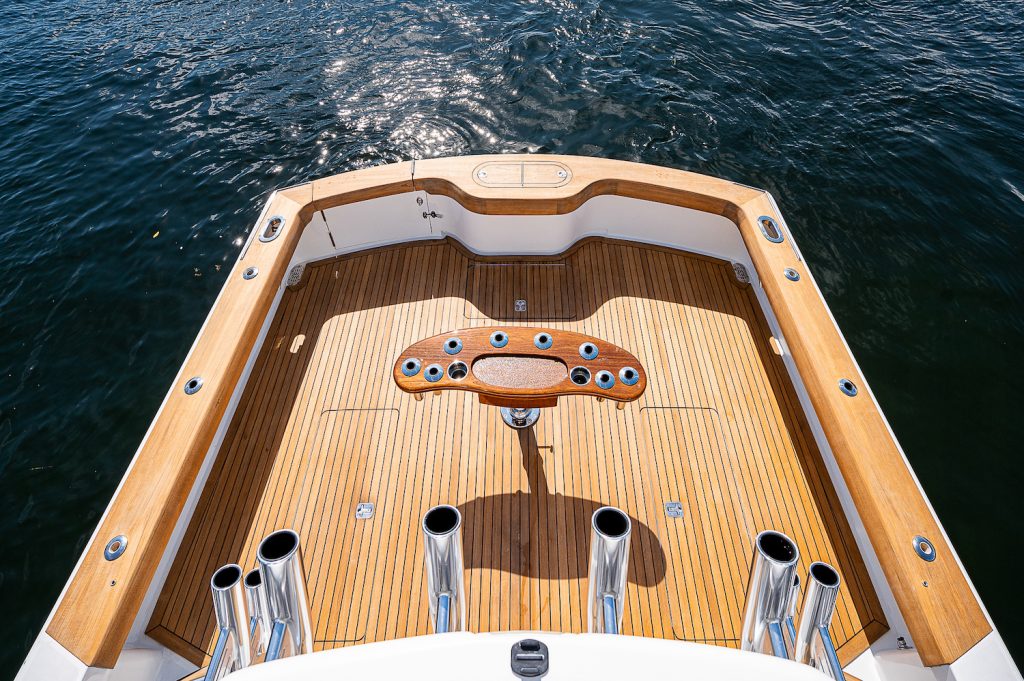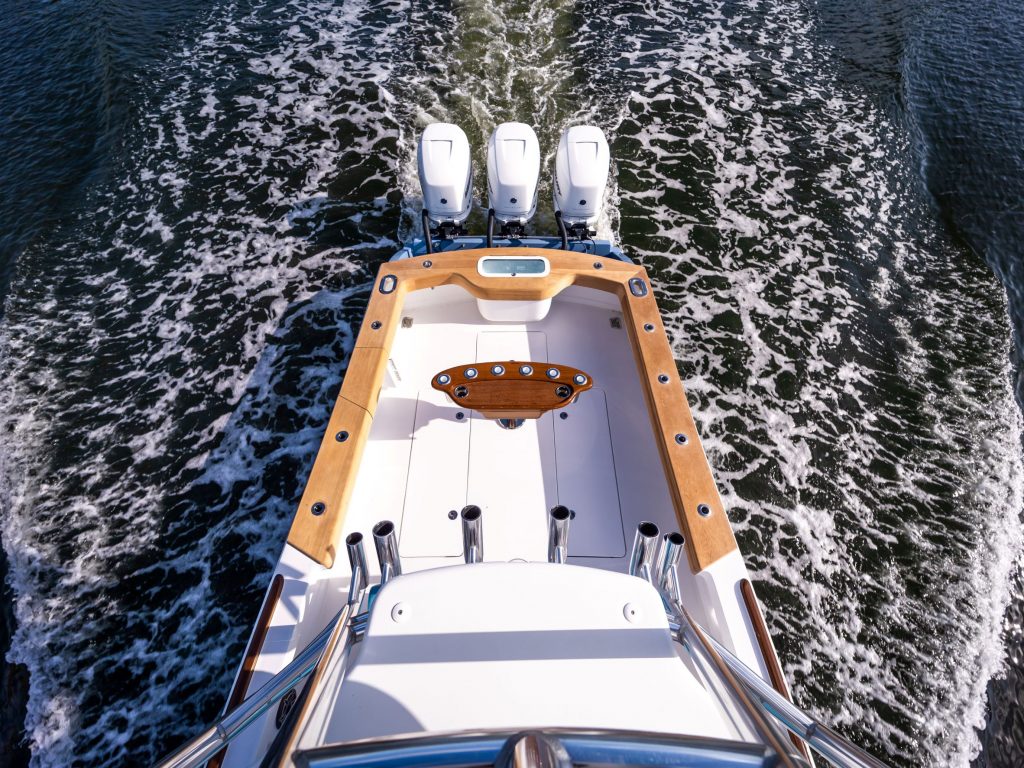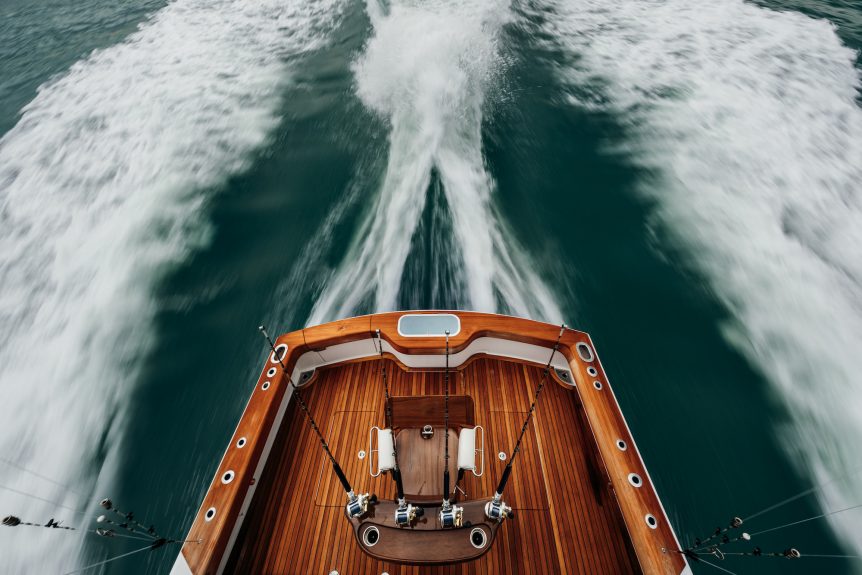For fishermen, the cockpit is the most important part of the boat, because that’s where the action takes place. We can probably all agree that having plenty of space in which to work sits atop the list of necessities for a great cockpit. There must be plenty of room for several people to move around at the same time. But what else goes into making a cockpit, “perfect?”
Several items come to mind, including gunnel and deck heights, plentiful storage (fish boxes, tackle storage, livewell space, storage for gaffs, rod storage, and more). Gunnel heights are important so you can lock your knees under the gunnel when fishing stand-up in rough seas. And deck height matters because you need to able to reach the surface of the water while standing in the ‘pit, for handling fish at boat-side. If you have a fighting chair, you want it mounted close enough to the transom so the rod tip can clear both corners of the stern, but far enough away so the wire man can easily move between the footrest and the back of the boat.

But there’s so much more that goes into cockpit design. Here, Release Boatworks’ naval architect Erwin Gerards sheds some light on how a great cockpit gets designed.
“There are ‘standards,’ though they’re not totally standard, because you can play with them depending on what you need for fuel and exhaust space under the deck,” Gerards said. “For instance, I have a standard camber that I use on most boats, but if it’s a big sportfish boat, then the camber gets a little less because you don’t want to put too much crown in it. There’s a standard height from the cockpit to the top of the covering board, approximately 25 to 28 inches depending on the size of the boat, and then obviously you need a certain amount of space for a chair or a rocket launcher and people fighting the fish in the cockpit. Where the process starts blending aesthetics with functionality is the size of the cockpit—where is the house located on the hull? Some people want to have the house further aft which makes the cockpit smaller and the interior bigger, so you can play with that.”

Gerards adds that gunnel height is key. “Again, that depends on the size of the boat,” he said. “With larger sportfish boats I can make it a little bit taller, but you must be careful because it’s harder to grab a billfish or a line if the gunnel is too high. When I start, depending on the size of the boat, I’ll know what looks good for gunnel height, so I have a baseline to work with. And then you have to take into account things like the fuel and exhaust. We call this the ‘design spiral,’ you start with a concept and then you keep going in circles, tweaking things until you get to the center—moving decks, the beam of the boat, the height of the gunnels, the engines, the weight. And as you move closer to the center everything comes together into a design that functions well.”



